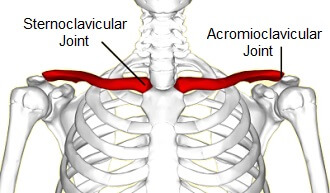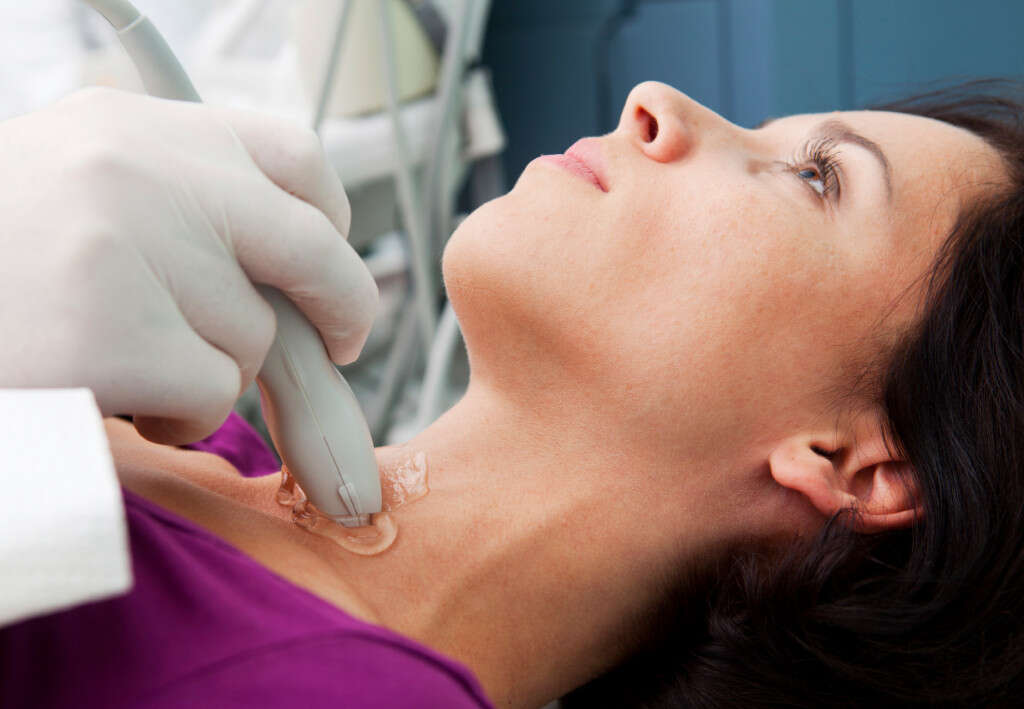A lump on the collarbone may be a cyst. Cysts are located under the skin and occur when fluid fills into a sac. These feel hard when you press on them from the skin’s surface and are not usually.
When contemplating lumps and mounds in varying bodily ranges, the collarbone is an infrequent location that commonly springs up. However, miscellaneous lumps can occur on collarbones for a variety of reasons, some more urgent than others.
Luckily, many collarbone lumps are completely harmless and aren’t cause for concern. But it’s paramount to be watchful and judicious, and getting any form of lump checked out is essential to maintain the finest health. Disregarding size, pain or smoothness, all lumps should be investigated by a professional doctor if consistent. But if hunting to learn more about potential lumps your collarbone could develop for contentment and satisfaction, keep reading to determine relevant causes and symptoms – with comparable pictures for reference.
- For many people, the first symptom of soft tissue sarcoma is a painless slow-growing lump in the trunk or limbs. As the mass grows, it may begin to press upon nerves or muscles and possibly cause pain, numbness, and/or skin breakdown.
- I am a 56 year old female and recently (couple days ago) noticed a hard, painless, non-moveable, marble sized lump on the right side of my collarbone. I walk daily and exercise using one and two pound.
- Another form of a soft lump on collarbone is swollen lymph nodes, with many completely bypassing this idea when researching. Swelling of lymphatic nodes is commonly associated with the base of neck or the right side of the neck, but they can extend as far down as the collarbone in circumstantial individuals.
What Causes a Hard Lump on Collarbone?
Perhaps the most common type of lump within the collarbone area near shoulder is hardened and stiff. This singlehandedly depends on causation, as the most common culprit for a hard lump on collarbone is injury or traumatic upheaval. A fracture or neat break can often result in unexpected lumps cropping up, and can occur even in the most unimportant of breakages.
If you’ve endured an injury but aren’t pronounced you’ve broken your collarbone, other signs to watch for are excessive swelling and blackening bruising, limited movement, and even sagging of the flawed shoulder.
If suspecting collarbone injury, it’s needful to visit your doctor speedily – regardless of lump development or not. They’ll refer you for an X-ray scan to analyze probable damage, and will recommend treatment options shifting onward.
Are Hard Collarbone Lumps Always Painful?
f originating from injury, the answer is staunchly yes. Virtually any form of bone break or fracture will cause some level of pain, especially if swelling is embroiled. But if your hard lump isn’t due to a car accident or fall, it could be the sign of something foreboding – especially if not painful.

Whilst rare, cancerous tumors can develop on the collarbone as a syndrome of bone cancer or secondary tumor spread from elsewhere. If undeniable you’ve not undergone an accident and hurt your collarbone, a hard lump veritably needs to be checked to examine the likeliness of a tumor. Characterized by hardness, rigidity, and ineptitude of being moved underneath skin, it’s almost guaranteed your lump isn’t a carcinogenic tumor if squishy and soft. Instead, it’s likely a lipoma. However, ensure to visit your doctor to be 100% positive as home self-diagnosis is rarely accurate.
Why Do I Have a Soft Lump on My Collarbone?
As mentioned, lipomas are a common cause of soft lumps arising on the collarbone. Simply a collection of excess fat cells, this form of lump isn’t considered harmful and rarely entails treatment. However, if your lipoma is eminently large and exasperating, surgical removal could be a viable treatment option if proposed.
Another form of a soft lump on collarbone is swollen lymph nodes, with many completely bypassing this idea when researching. Swelling of lymphatic nodes is commonly associated with the base of neck or the right side of the neck, but they can extend as far down as the collarbone in circumstantial individuals. A common repercussion of underlying bacterial infections or viruses, distended lymph nodes are typically accompanied by rampant fever symptoms and pained tenderness when touched. Rarely hardened and easily treatable provided your doctor targets the elemental cause with medication, swollen lymph nodes are rarely concerning if guilty infection is confirmed.

Causes of Painful Lump on Collarbone
Due to the sheer sum of potential collarbone lumps, it’s certain greater than one type can be painful. However, one of the most common styles of painful lumps on collarbone is infected cysts, and this possibly hard, moveable lump must be treated with utmost carefulness. Defined as fluid-filled sacs that can occur implicitly anywhere on the body, cysts are just as likely to emerge on the collarbone as anywhere else. Uninfected cysts are relatively harmless and don’t cause pain, but if infected and united with redness, swelling and leaking pus, they can be excruciating for the sufferer.
Another form of potential collarbone cyst is a ganglion cyst. Whilst most commonly found on the hands, they can stem from the collarbone too. Visibly witnessed beneath skin, attached to joints or tendons and still represented as fluid-filled pockets of skin like general cysts, ganglion cysts are ordinarily benign and painless. However, if notably close to a nerve they can be incredibly painful and debilitating, meaning treatment is likely unavoidable.
Is Lump on Collarbone Near Throat Dangerous?
Whilst most likely harmless swollen lymph nodes, other collarbone-related lumps stretching further toward the neck can generate severe consequences. A relatively frequent symptom of thyroid cancer is neck swelling and lumps, especially if fast-growing with no sign of disappearing independently. So if you have a seemingly continuous, enlarged mass within your throat accompanied by other signals such as difficulty swallowing or breathing, visit your doctor purposefully. But it’s still imperative not to panic, as a distinctive throat swelling could be caused by plenty of other harmless conditions – only a professional can provide a concrete diagnosis.
Article References:
Finding a lump under your skin can be a worrying discovery — but lumps under the skin are more often relatively harmless than cancerous.
To help you better understand when to be concerned about a lump under the skin, we talked to Vinod Nambudiri, MD, of Dana-Farber’s Center for Cutaneous Oncology.
Soft Painless Lump On Collarbone Bone
What are some of the most common causes of skin lumps?
Lumps under the skin can have many different causes resulting from a variety of different processes. The processes that can form lumps can be benign (non-cancerous) or malignant (cancerous).
Benign lumps include:

- Cysts, which can form when an oil-producing gland in the skin becomes clogged.
- Lipomas, a collection of harmless fatty cells.
- Swollen lymph nodes, which can accompany some types of infections.
While potentially uncomfortable, these types of lumps are harmless and are not cancerous.
More rarely, a lump under the skin can indicate cancer. Cancerous lumps under the skin can be harmful and should be attended to by a doctor.
If you are concerned about a lump under your skin, don’t hesitate to get it checked out — especially since cancer cannot be diagnosed without a doctor.
Is there a way to determine if a lump is just a cyst?
Some individuals are more susceptible to cysts than others. Cysts can form when normal cellular turnover in the skin is disrupted. There are other rarer causes that can be related to genetics and family history as well.
Cysts have certain characteristics that can distinguish it as a cyst. One in particular is a small opening, known as a pore or punctum, in the center of the lump. This pore can be potentially hard to find, however. Some cysts also have a certain way that they feel and move under the skin. For example, a cyst may have a smooth surface, or may roll under the surface of the skin when pressure is gently applied.
Soft Painless Lump On Collarbone Area

A self-exam at home may provide some insight into whether or not a lump is a cyst, but you will need the help of a doctor to get a definitive diagnosis.
When should I be worried about a lump under the skin?
If you are at all concerned about a lump under the skin, don’t be afraid to seek medical attention. Certain attributes can lend to a lump being more concerning than others.
A lump that grows and then goes away on its own can usually be attributed to an inflamed cyst, which is normally harmless. A “doughy” lump is usually associated with a benign lipoma. Likewise, lumps that are harmless can often be accompanied by tenderness, pain, or drainage.
Signs that suggest a lump might be concerning include:
- if it suddenly becomes very hard or feels like a rock under the skin.
- if the lump starts bleeding or becomes a wound.
- if the lump begins growing rapidly.
If a lump is showing any of these symptoms, it should be looked at by a doctor. Likewise, any lumps that are new, growing, or symptomatic should be checked out by a physician.
Should I be concerned about a lump under the skin after the COVID-19 vaccine?
Side effects of COVID-19 vaccines can include enlarged lymph nodes in the armpit or neck on the side where the person got vaccinated, which is very much a normal response to the vaccine and should go away within a week or two. If lump swelling persists beyond two weeks, talking to a medical professional is likely advised, says Harold Burstein, MD, PhD, a physician in the Breast Oncology program at Dana-Farber/Brigham and Women’s Cancer Center.
The vaccine should not cause any swelling in the breast itself; if you notice changes in the breast, let your doctor know.
Soft Painless Lump On Collarbone Symptoms
Burstein also notes that Dana-Farber is advising breast cancer patients to get vaccinated in the arm on the opposite side of the breast in which they developed cancer to reduce any chance of lymphedema in breast cancer survivors.
Remember: Dana-Farber recommends that both cancer survivors, and active patients on therapy, should receive the COVID-19 when it is made available to them.
How do you treat a lump?
If the lump is benign, it may not require any treatment at all. Your doctor may decide to simply monitor it overtime and keep track of any changes.
If the lump is a cyst and has become inflamed or infected, the doctor may drain it or preform a procedure called an intralesional injection. In the case of an intralesional injection, a doctor will inject medicine directly into the lump in order to treat it. A lump can also be removed from under the skin if necessary.
If a doctor is concerned about the lump, doctors may perform a biopsy to look more closely at the cells inside the lump. If the lump is cancer, doctors will devise an appropriate treatment plan.
What are some signs of skin cancer?
The most common types of skin cancer are usually caused by exposure to ultraviolet light. Because of this, areas of the body that are often exposed to sunlight — like the face, ears, neck, scalp, and hands — can be at a higher risk of developing skin cancer. If skin lesions develop in those areas (or other areas of the skin) and have the following characteristics, they should be evaluated by a doctor:
Lump On Left Collarbone
- Tender
- Painful
- Bleeding
- Accompanied by new symptoms
- Has changed in color
- Large